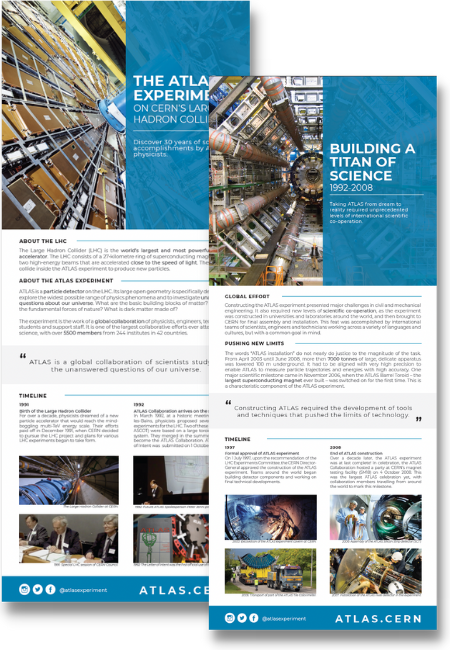Sheet Type

ATLAS - CERN History (English / French)
Listing Priority
50
The ATLAS Thesis Award winners for 2022 are:
See the News Article on the 2022 Awards.

5 banners giving overview of ATLAS Experiment and milestones from 30 years of history.